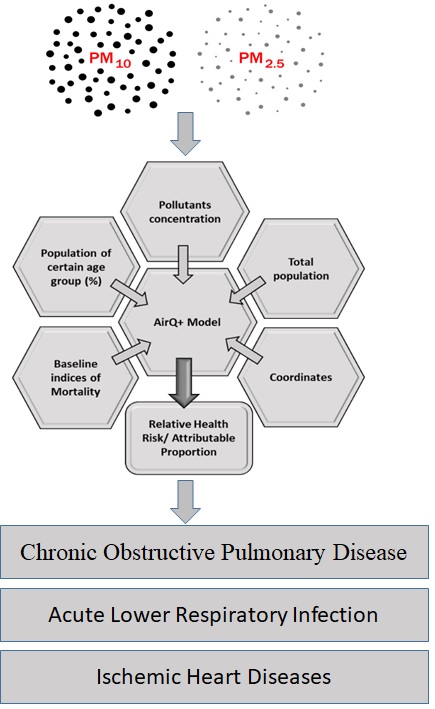
This study was conducted to evaluate the attributable proportion and relative risks caused by inevitable exposure of humans to particulate matter (PM2.5 and PM10). The health impacts of particulates in terms of attributable proportion were modulated using AirQ+ software. Input data related to particulates’ concentration, health and population were collected from the Environment Protection Department (EPD), Punjab Bureau of Statistics and Health Department of Punjab. Results showed that PM2.5 with the year average concentration of 55.9 ug/m3 contributes 24.17% attributable-proportion (AP) to all-cause mortality in adults age 30+, and 31.41% AP to Chronic Obstructive Pulmonary Disease (COPD) in adults age 30+. Attributable proportion to stroke mortality in adults age 25+ was 33.4% (BI-150) and 34.09% (BI-630) was in children aged 0-5 years, contributing to acute lower respiratory infection (ALRI) mortality. Modulated results indicated that the attributable proportion to ischemic heart diseases (IHD) was 40.8% (BI-95.2) in adults age 25+ and PM10 with an average concentration of 105 ug/m3 contributes 31.11% AP to infant post-neonatal. There is need of proper mitigation measures for reduction of pollutants’ concentration to decrease potential health impacts of air particulates.
Total file downloads: 8